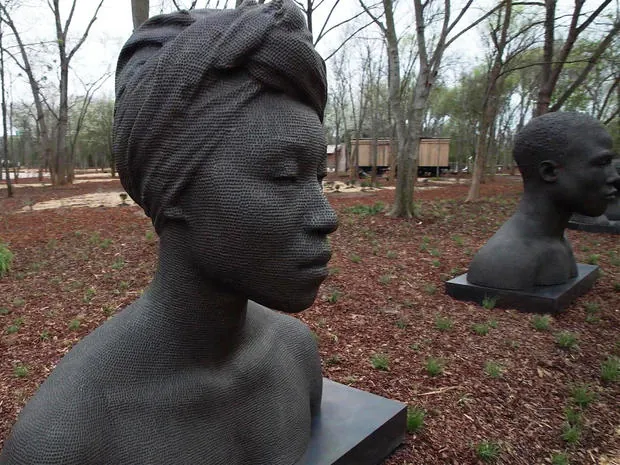The Transformation of Memory: Alabama's Freedom Monument Sculpture Park
How the Freedom Monument Sculpture Park in Montgomery, Alabama, through art, honors the complex history of slavery and inspires a dialogue on racial justice

In the heart of Montgomery, Alabama, a space once overlooked now stands as a beacon of reflection and conversation. The Freedom Monument Sculpture Park represents a profound commitment to confronting the United States' harrowing past of slavery through the universal language of art. Envisioned by the esteemed lawyer and social activist Bryan Stevenson, the park spans 17 acres and is adorned with nearly 50 sculptures from globally recognized artists, including Kehinde Wiley, Simone Leigh, and Kwame Akoto-Bamfo. These pieces serve not only as a testament to the indomitable spirit of those who suffered under slavery but also as a call to acknowledge and learn from this painful chapter of American history.
Explore the Freedom Monument Sculpture Park
Bryan Stevenson, founder and director of the Equal Justice Initiative (EJI), has long championed the causes of those marginalized by the justice system. With a legacy of overturning more than 140 wrongful convictions and sentences, Stevenson's work extends beyond the courtroom into the realm of cultural preservation and education. The Freedom Monument Sculpture Park is his latest endeavor, aimed at bridging the gap between the past's injustices and the promise of a more equitable future.
Positioned strategically between Montgomery's intricate network of train tracks and the Alabama River, the park stands on a historically significant site. This area, once a passage for enslaved Africans, now hosts a collection of sculptures and installations that narrate the struggle, resilience, and humanity of those enslaved. Highlights include original plantation dwellings, a whipping post, and thought-provoking artwork like "Strike" by Hank Willis Thomas, which symbolizes both the violence endured and the persistent hope for peace and resolution.
At the heart of the park is a monumental installation designed by Stevenson himself. This 43-foot-tall structure is inscribed with the names of 122,000 individuals, drawn from the 1870 census—the first government document to officially recognize the names of formerly enslaved people. This wall not only honors those who lived through slavery but also symbolizes the ongoing journey towards freedom and justice.
Stevenson's vision extends beyond mere commemoration. By facilitating an honest dialogue about America's legacy of slavery and racial injustice, he believes in the potential for healing and progress. The Freedom Monument Sculpture Park stands as a testament to this belief, inviting visitors to confront the past, recognize the strength and dignity of those who suffered, and inspire ongoing efforts towards equality and justice.
As the park opens its gates, it promises to be a space of reflection, education, and transformation. It serves as a reminder that while the truth about America's history of slavery can be painful to confront, it is only through this reckoning that the nation can move forward towards true freedom and equality.
Learn more about Bryan Stevenson's vision
FAQs:
-
What is the significance of the Freedom Monument Sculpture Park?
- The park serves as a physical and symbolic space to confront the history of slavery in America, honor the resilience of enslaved individuals, and inspire dialogue on racial justice.
-
Who is Bryan Stevenson?
- Bryan Stevenson is a lawyer, social activist, and founder of the Equal Justice Initiative, known for his work in overturning wrongful convictions and advocating for racial equality.
-
What can visitors expect to see at the park?
- Visitors will encounter sculptures by renowned artists, historical artifacts related to slavery, and a monumental installation bearing the names of formerly enslaved people.
-
How does the park contribute to the conversation on racial justice?
- By vividly portraying the history of slavery and honoring the humanity of those affected, the park encourages visitors to engage with America's racial past and consider its impact on present and future justice.
Discover more about the Equal Justice Initiative
The Freedom Monument Sculpture Park is more than a collection of art; it is a journey through America's heart of darkness, guided by the light of understanding, empathy, and the unwavering hope for a better future. It stands as a reminder that the path to true freedom and equality is paved with the courage to face our collective past and the resolve to build a more just world.
What's Your Reaction?






















